Abstract
Polymorphonuclear leukocytes from burned patients exhibit suppressed chemotaxis possibly related to the susceptibility of such patients to opportunistic infection. This study assesses the effect of normal serum upon burn-suppressed leukocytes and the effects of three commonly used topical chemotherapeutic agents upon the chemotaxis exhibited by granulocytes from normal controls. In vitro incubation with normal serum restored chemotaxis to normal in the suppressed granulocytes from burned patients. The serum factor responsible for this restoration was heat labile. Serum albumin alone did not exhibit this effect. Both mafenide and silver sulfadiazine suppressed the chemotactic function of granulocytes obtained from normal controls, while silver nitrate exhibited no such activity. Studies of the chemotactic function of control granulocytes after incubation with sera from burned patients yielded similar results; only the sera from patients treated with silver nitrate failed to suppress normal leukotaxis. The chemotactic impairment found in leukocytes from burned patients, however, while related to burn size and predictive of prognosis, did not vary with the agent used for the topical therapy. These data suggest the presence of a reversible intrinsic defect in leukotaxis consequent to burn injury, related to some factor deficient in burn serum. In addition, extrinsic impairment of normal granulocyte leukotaxis by two commonly used chemotherapeutic agents is demonstrated.
Full text
PDF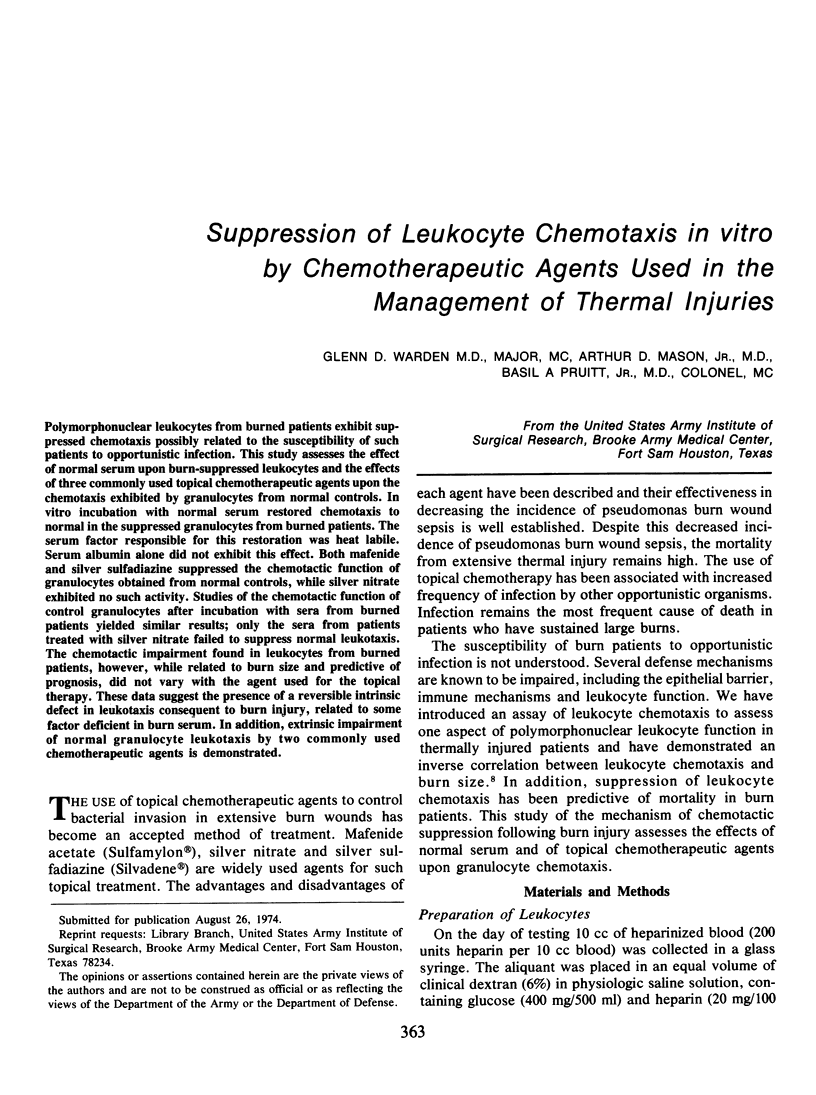
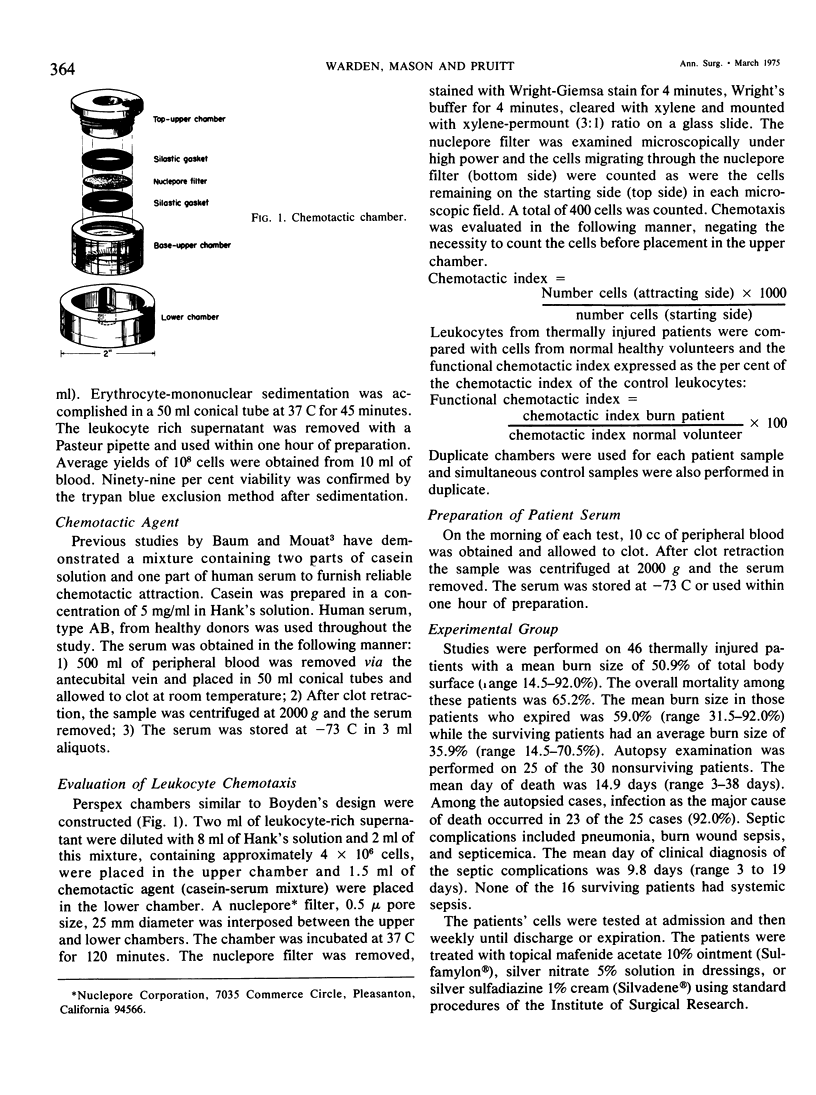
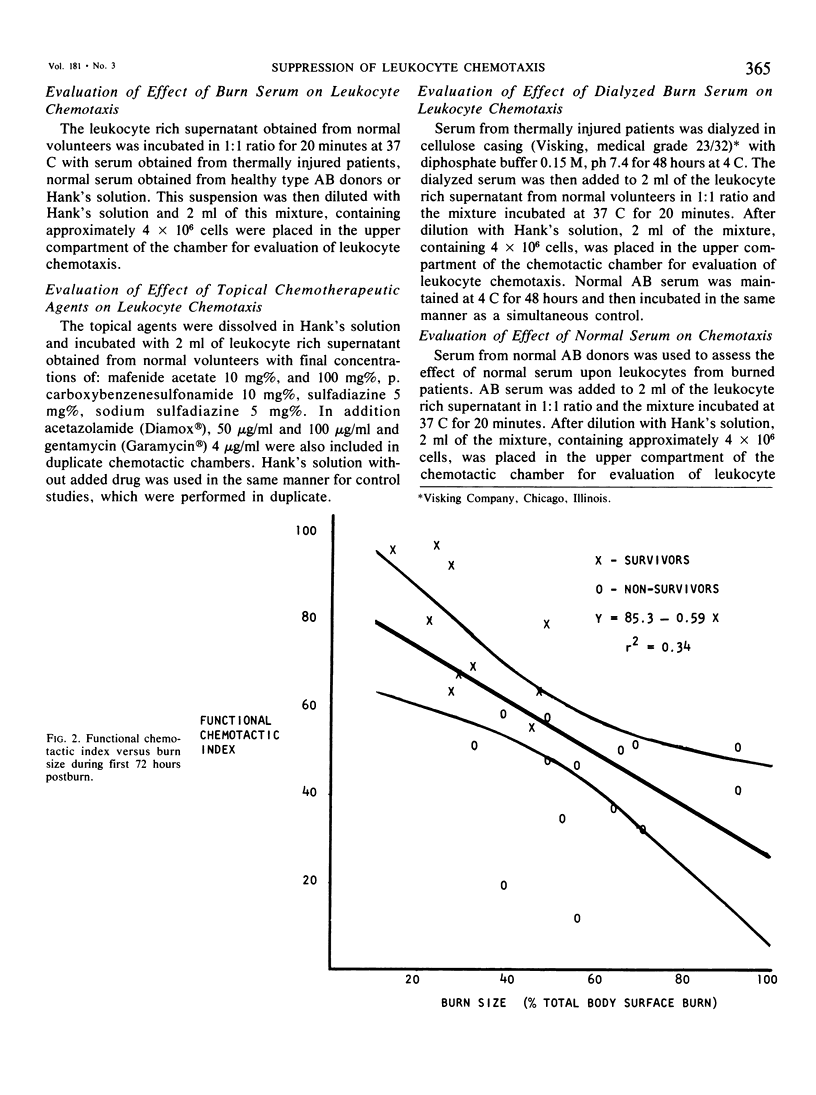
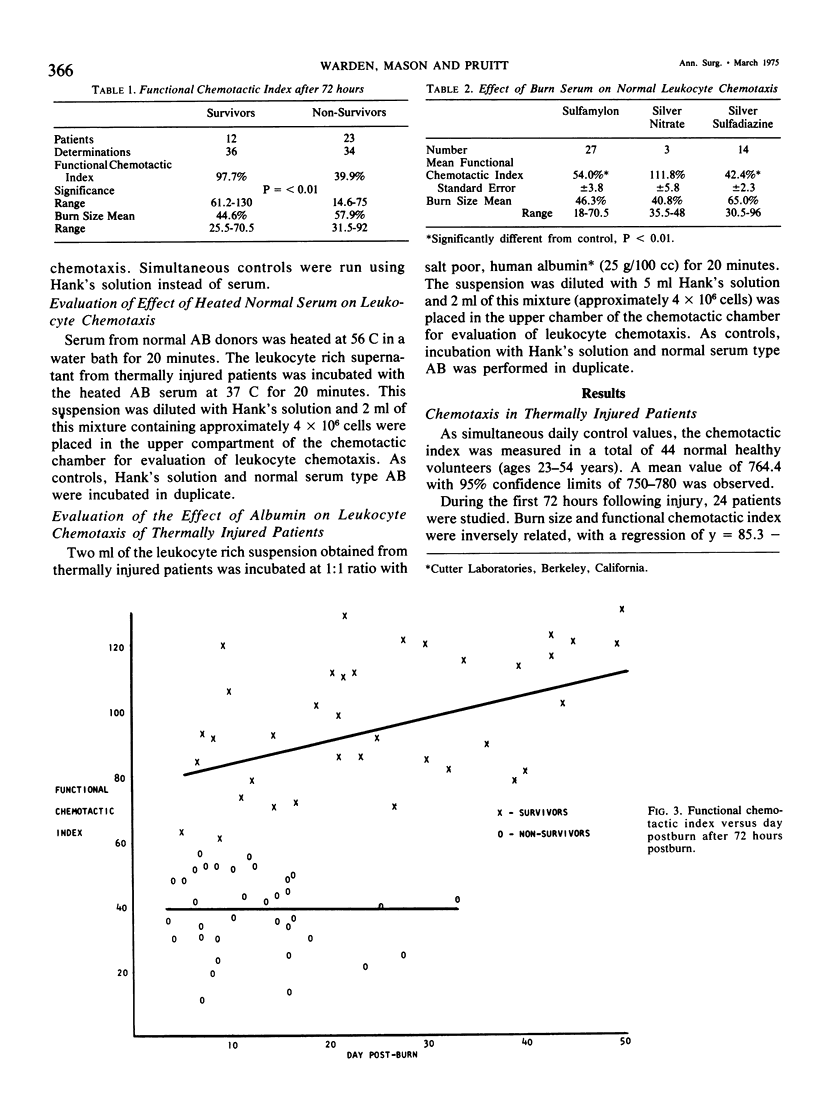
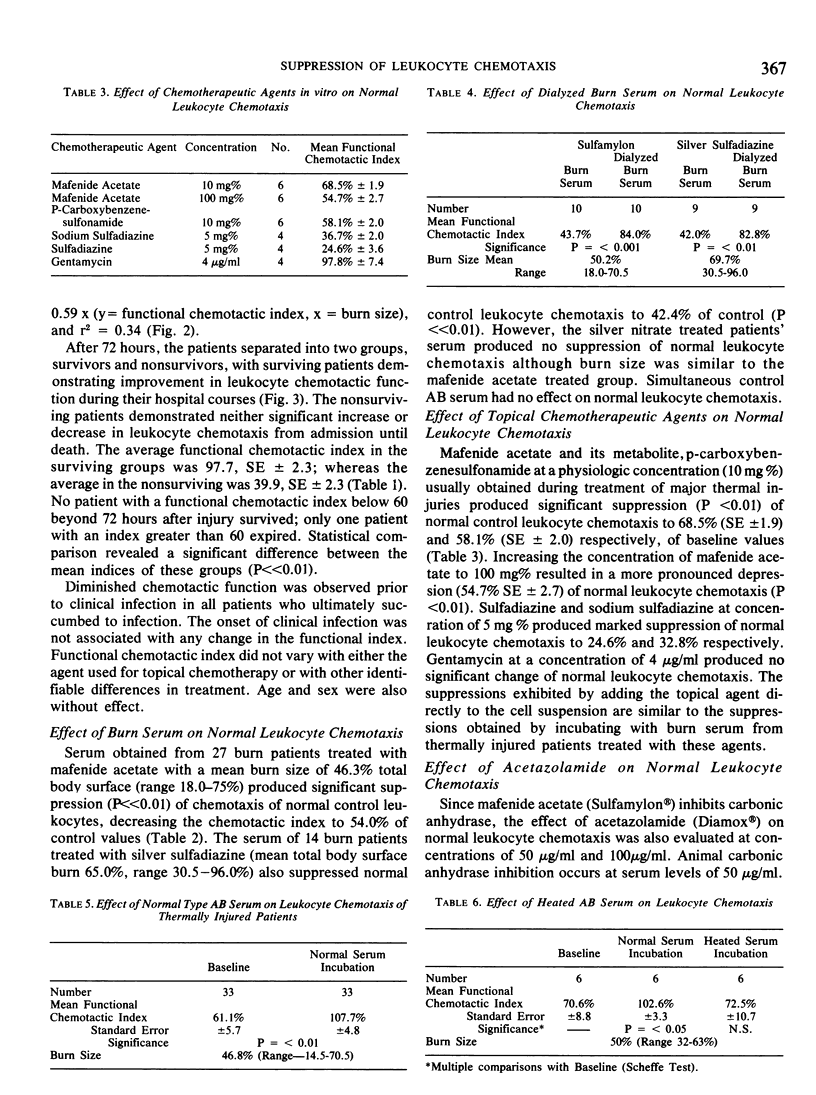
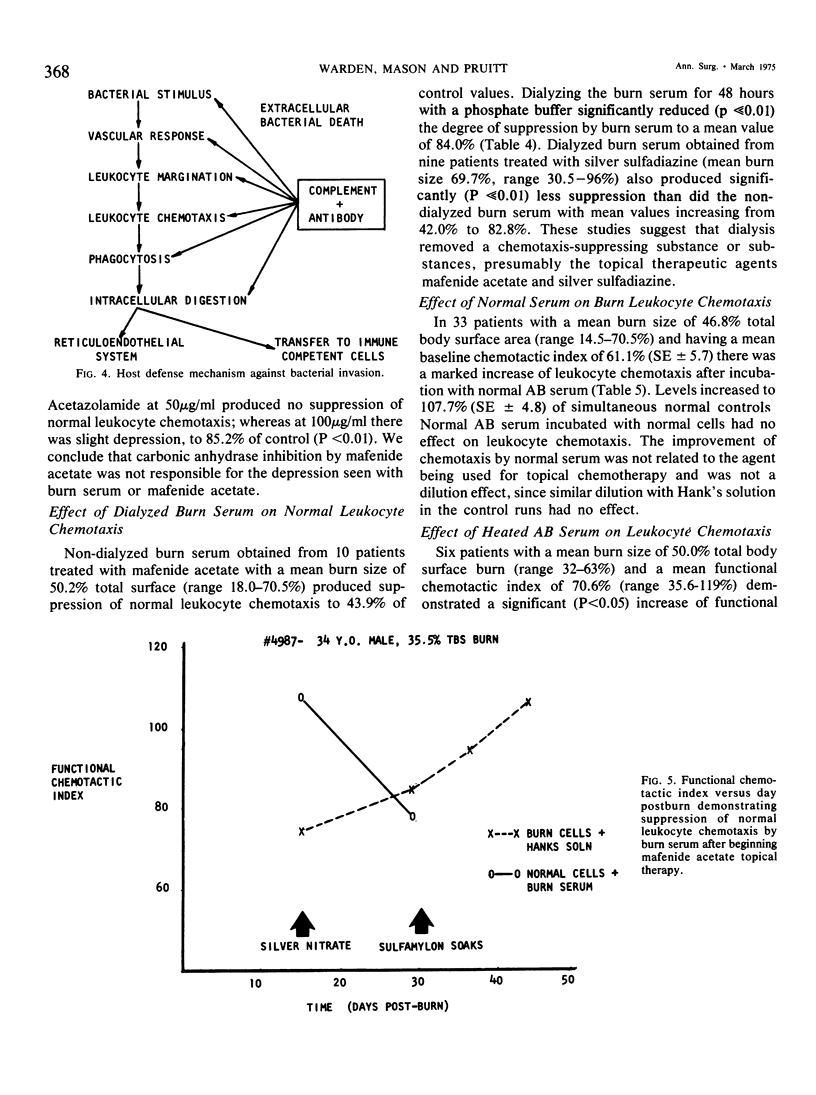
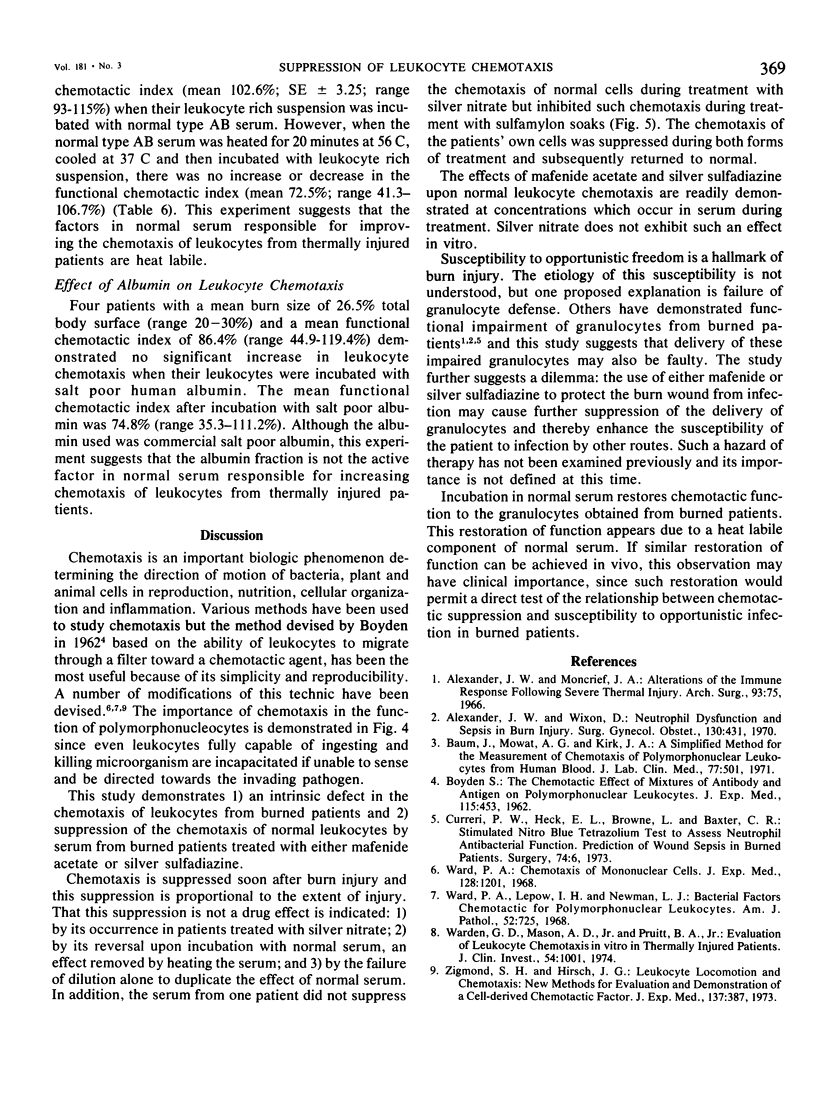
Selected References
These references are in PubMed. This may not be the complete list of references from this article.
- Alexander J. W., Moncrief J. A. Alterations of the immune response following severe thermal injury. Arch Surg. 1966 Jul;93(1):75–83. doi: 10.1001/archsurg.1966.01330010077011. [DOI] [PubMed] [Google Scholar]
- Alexander J. W., Wixson D. Neutrophil dysfunction and sepsis in burn injury. Surg Gynecol Obstet. 1970 Mar;130(3):431–438. [PubMed] [Google Scholar]
- BOYDEN S. The chemotactic effect of mixtures of antibody and antigen on polymorphonuclear leucocytes. J Exp Med. 1962 Mar 1;115:453–466. doi: 10.1084/jem.115.3.453. [DOI] [PMC free article] [PubMed] [Google Scholar]
- Baum J., Mowat A. G., Kirk J. A. A simplified method for the measurement of chemotaxis of polymorphonuclear leukocytes from human blood. J Lab Clin Med. 1971 Mar;77(3):501–509. [PubMed] [Google Scholar]
- Curreri P. W., Heck E. L., Browne L., Baxter C. R. Stimulated nitroblue tetrazolium test to assess neutrophil antibacterial function: prediction of wound sepsis in burned patients. Surgery. 1973 Jul;74(1):6–13. [PubMed] [Google Scholar]
- Ward P. A. Chemotoxis of mononuclear cells. J Exp Med. 1968 Nov 1;128(5):1201–1221. doi: 10.1084/jem.128.5.1201. [DOI] [PMC free article] [PubMed] [Google Scholar]
- Ward P. A., Lepow I. H., Newman L. J. Bacterial factors chemotactic for polymorphonuclear leukocytes. Am J Pathol. 1968 Apr;52(4):725–736. [PMC free article] [PubMed] [Google Scholar]
- Warden G. D., Mason A. D., Jr, Pruitt B. A., Jr Evaluation of leukocyte chemotaxis in vitro in thermally injured patients. J Clin Invest. 1974 Oct;54(4):1001–1004. doi: 10.1172/JCI107815. [DOI] [PMC free article] [PubMed] [Google Scholar]
- Zigmond S. H., Hirsch J. G. Leukocyte locomotion and chemotaxis. New methods for evaluation, and demonstration of a cell-derived chemotactic factor. J Exp Med. 1973 Feb 1;137(2):387–410. doi: 10.1084/jem.137.2.387. [DOI] [PMC free article] [PubMed] [Google Scholar]


